By Matt Klampert
Aside from baseball and sumo, the other great Japanese pastime is probably taking a dip in an onsen. There are an estimated 3,000 hot springs in Japan, and over 70 within Snow Country. It is not an exaggeration to say that onsen are indispensable to YUKIGUNI, not only for the enjoyment of seasonal tourists but also for the people living here in Niigata, Nagano, and Gunma all year round. And better yet, every onsen is different, even down to the color of the water! Let’s learn all about them! Below is a primer for everything and anything about onsen.
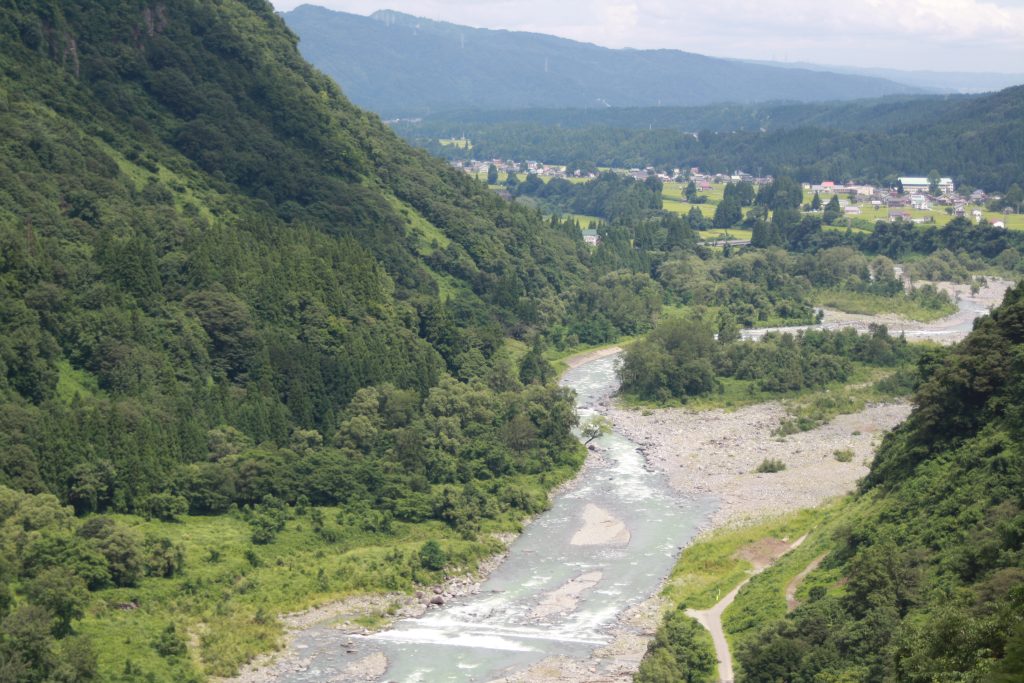
The creation of a hot spring
So how did these hot springs come to be? The answer is surprisingly complex! In the case of Snow Country, we are located in a fault zone known as “Fossa Magna.” This tectonic line goes across the center of Japan between Shizuoka and Niigata prefectures. In fact, Fossa Magna can be thought of as separating eastern from western Japan. Originally, this area was entirely underwater approximately 6,000m deep, but 12 million years ago shifts in tectonic plates caused the land to rise up. Mt. Naeba itself was an active volcano, though it has not been active for hundreds of thousands of years. Seawater was trapped in the ground, and is continuously warmed by the earth before spouting aboveground. As a result, the hot springs of YUKIGUNI are considered to be “volcanic” onsen.
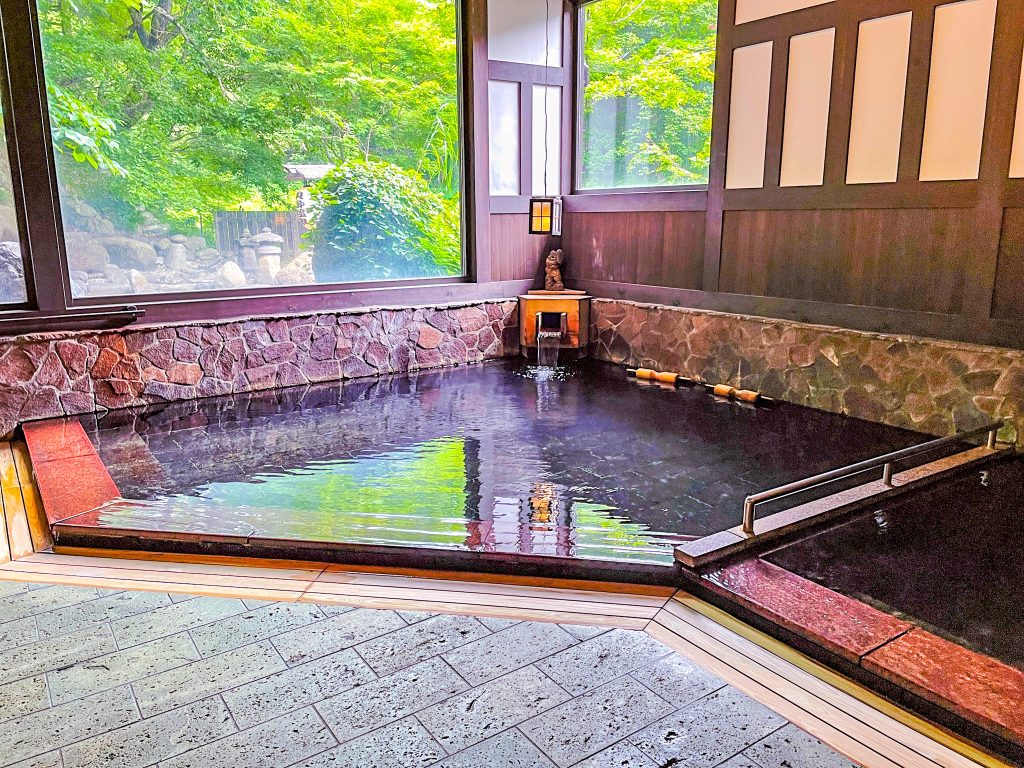
Not just water! The composition of hot springs
Onsen are much more varied than first-time travelers to Japan may realize at first. In particular, there are many different types of springs available in YUKIGUNI. The simplest kind of onsen is just that: a simple spring. Any onsen that contains 1,000 mg or below of dissolved minerals is a simple spring. These onsen can be found throughout this region, such as Yama no Yu, which is located close by to Echigo-Yuzawa station, the gateway to Snow Country.
On the other hand, there are hot springs that contain rather large concentrations of minerals. For example, not far from the Echigo-Yuzawa bullet train station is Komako no Yu, a chloride hot spring. This spring is named for the heroine Komako of the novel Snow Country. You can find other things in this area named after Komako, such as delicious Komako mochi! Click HERE for information about other sweets in Snow Country.
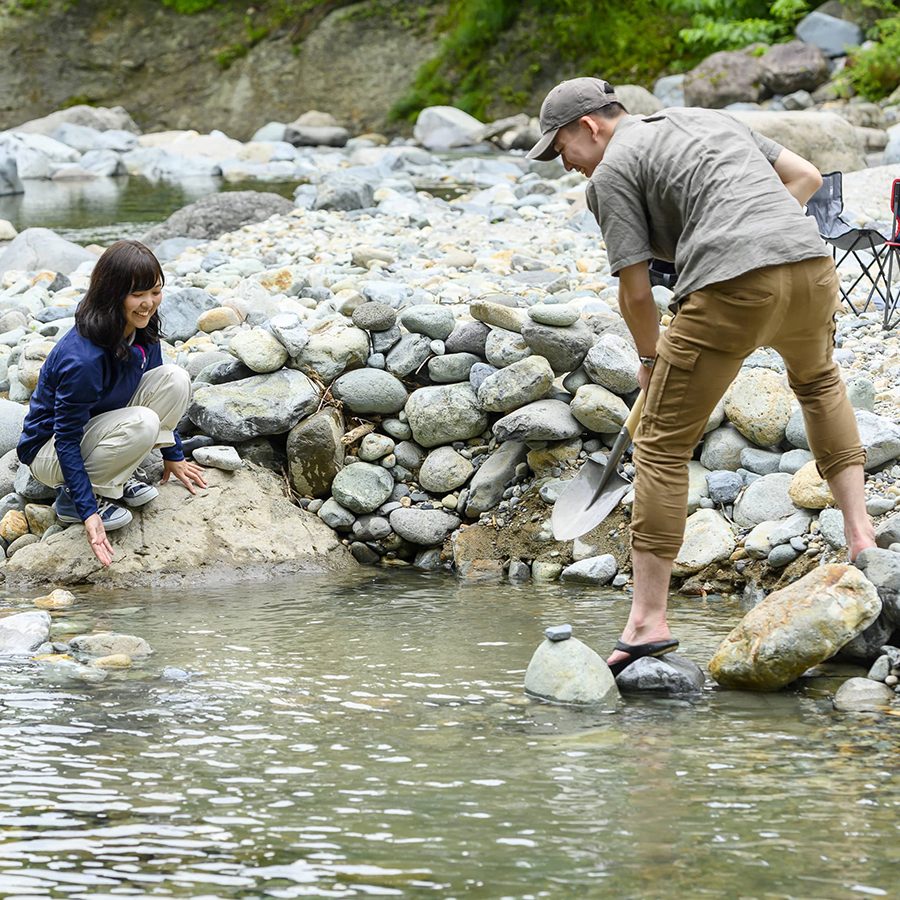
Some people associate onsen with a sulfurous smell, and indeed many hot springs are sulfur springs. A benefit to sulfur springs is that they make your skin smooth and soft! Two such sulfur springs are Takahan’s Tamago no Yu, and Kiriake Onen, a “hidden onsen” located in remote Akiyama-go. We wrote a whole article about hidden onsen, click HERE for more information.

On the other hand, there are also baths like the one at eco-lodge Hatago Isen which have no such smell at all. Other such alkaline springs can be found all over Uonuma City’s Oyu Onsen. This area, which was previously the site of a prosperous silver mine, is known for having a lot of history with onsen. Two recommended baths to try are located at the Tomoya Hotel and Izumiya Ryokan.
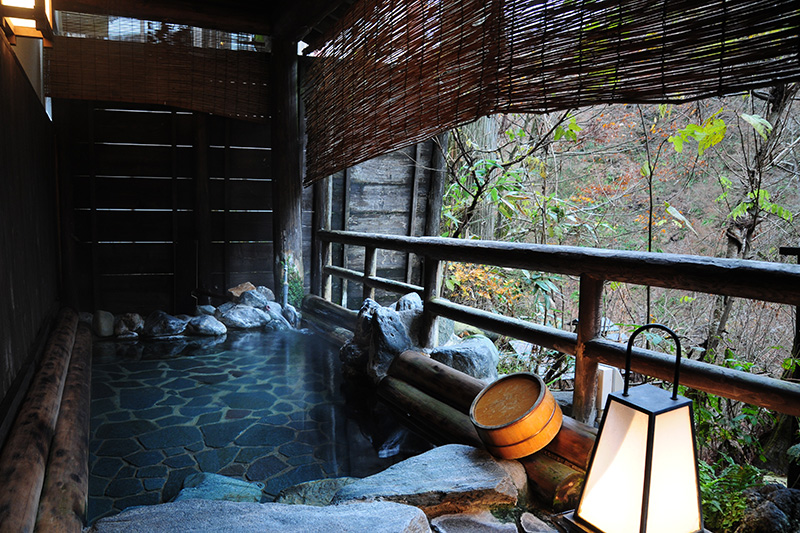
Rarer hot spring compositions include radium springs, such as Jizaikan in Uonuma City’s Tochiomata Onsen village. Though the idea of bathing in a radium spring may be surprising to some, Radium springs are said to promote metabolism and lessen the effects of neuralgia. Click HERE for a model tour including a relaxing stay and zazen meditation class at Jizaikan.
The health benefits of Japanese Hot Springs
In the old days “water cures” were very popular in Japan, and people traveled long distances to some of these baths in order to improve their health. It just so happens that one of the top 3 medicinal onsen, Matsunoyama Onsen, is located in YUKIGUNI. The hot springs at Matsunoyama Onsen are hypertonic chloride springs containing highly concentrated ions, which means ingredients in the spring water enter the body more easily, and the high salt content prevents these ingredients from leaving your body after you exit this spring, so you stay feeling warmer for longer. The high salt content of Matsunoyama Onsen’s water also benefits their cuisine, such as their touji tamago, which is said to taste salty without needing any salt added to it. The heat from the hot springs is used to heat roads and also generate power for the onsen village. Click HERE for more information about this famous onsen village.
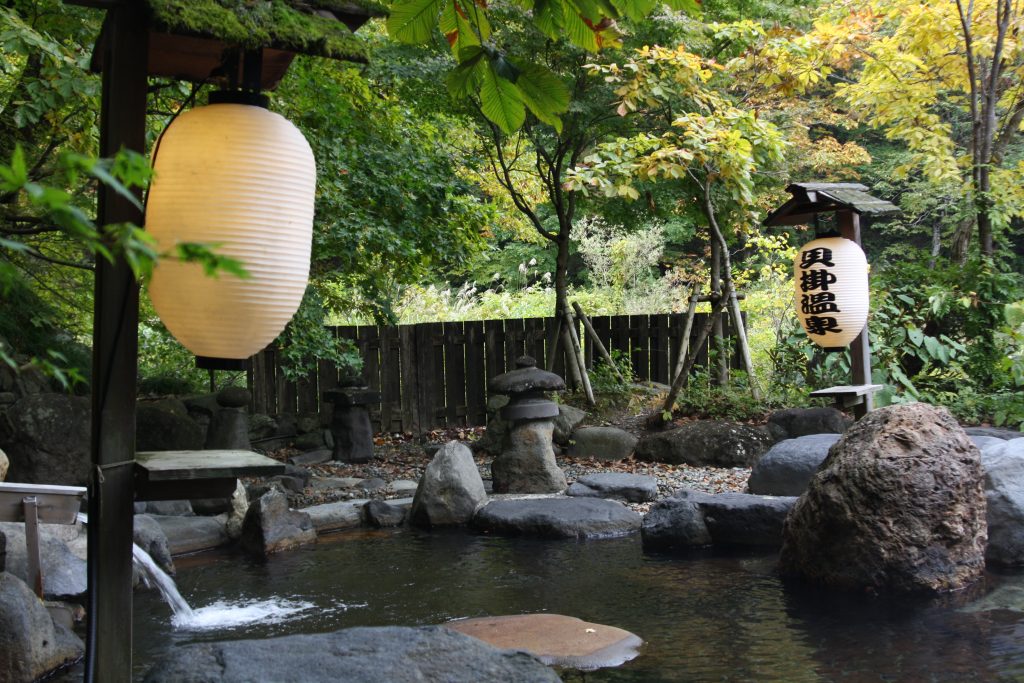
Kaikake Onsen in Yuzawa has a history of people staying there for long periods of time to recover from illness, and it was thought to be especially useful in healing damaged eyes. There are many onsen, coincidentally, around the remote town of Tsunan, which are considered to be good for healing for cuts and injuries, including the springs at Hotel New Greenpia and Ryugakubo Onsen. Ryugakubo is a famous pond considered to be one of the 100 most important bodies of water in Japan, located within the expansive Naeba Sanroku Geopark.

The Long History of Japanese Hot Springs in Yukiguni
The enduring popularity of hot springs ensures that there will always be more accommodation that offer them. However, the Snow Country area features some of the oldest onsen facilities in all of Japan.
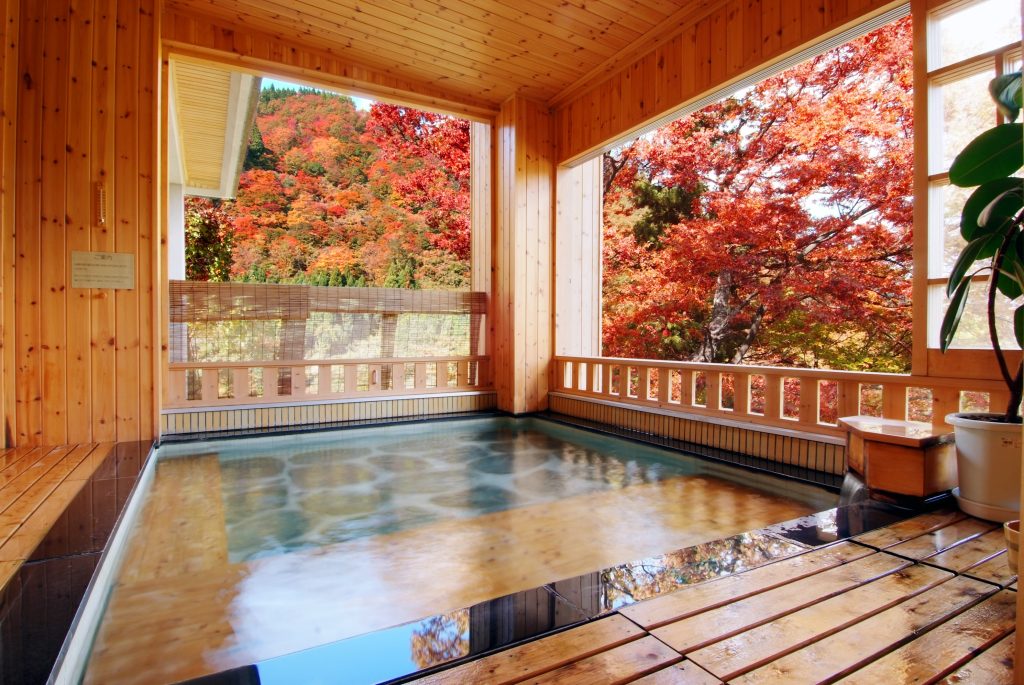
Perhaps the hot spring with the longest history in this area is Takahan. It was founded over 900 years ago by a man named Hanroku Takahashi who discovered the spring in nature while foraging for food one day. The Takahan inn has now been owned by the same family for over 30 generations. When the Joetsu Line opened in 1931 people from Tokyo and beyond started coming to Takahan in droves, including the Nobel Prize winning writer Yasunari Kawabata. The room where Kawabata wrote his magnum opus Snow Country (or YUKIGUNI in Japanese), called Kasumi no Ma, has been preserved for guests to enjoy.
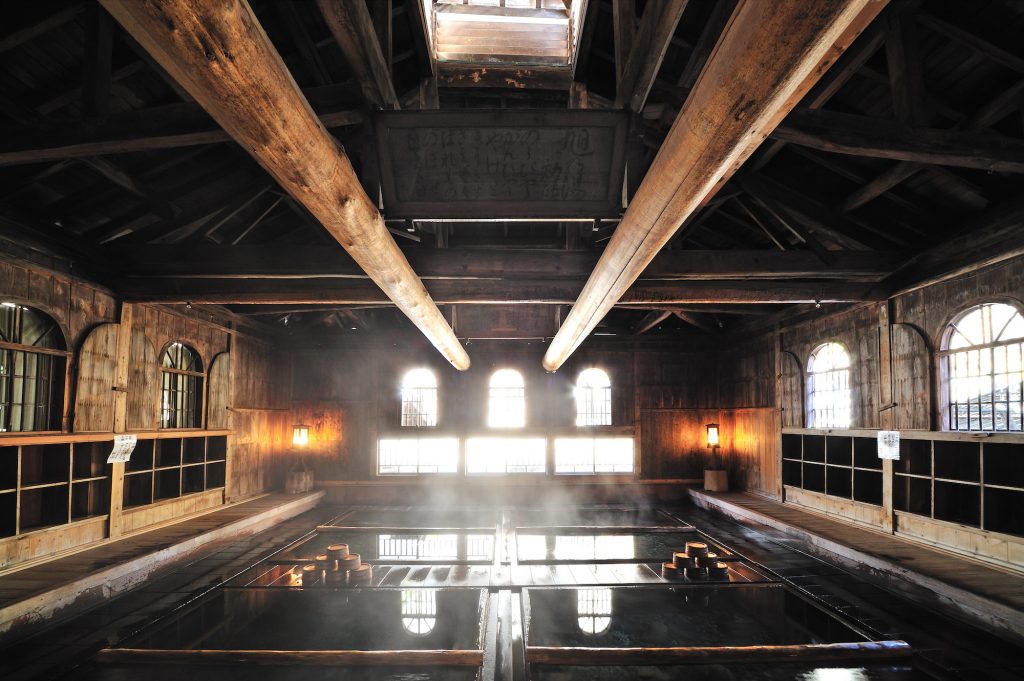
Just as the weather changes suddenly from when you exit the tunnel from Minakami to Yuzawa, so too is the onsen different. Hoshi Onsen Chojukan in Minakami is renowned for the architecture of their inn and its baths. It is thought that Hoshi Onsen has been used as a hot spring for the locals for over 400 years. The onsen at Chojukan is a special sulfate spring that you can see bubbling up from the cobblestone floor. Its image has been used in tourism promotion campaigns since the Meiji era, and Hoshi Onsen Chojukan was declared a Registered Tangible Cultural Property of Japan in 2006.

Want to learn more?
In YUKIGUNI there are 7 different towns and cities across three prefectures, each with exciting hot springs for you to visit! A great start is within your accommodation itself! Click HERE to learn about our eco-lodges, which besides having great onsen, also promise a more sustainable model to touring our Snow Country.
Information for Travelers
Yama no Yu
Address: 930 Yuzawa, Yuzawa Town, Minamiuonuma District, Niigata Prefecture 949-6101
Cost: 500 yen for day trip
Closed on Tuesdays
Komako no Yu
Address: 148 Yuzawa, Yuzawa Town, Minamiuonuma District, Niigata Prefecture 949-6101
Cost: 500 yen for day trip
Closed on Thursdays
Kiriake Onsen
Address: Kiriake, Sakae Village, Shimominochi District, Nagano Prefecture 389-2703
River itself is free to enter and open year-round, for accommodation nearby please contact
Yusenkaku Ryokan at 025-767-2252 or visit http://yusenkaku.yadoroku.jp/
Hatago Isen
2455 Yuzawa, Yuzawa-machi, Minamiuonuma-gun, Niigata
Tomoya Hotel
Address: 282 Oyuonsen, Uonuma City, Niigata Prefecture 946-0088
Jizaikan at Tochiomata Onsen
Address: 66 Kamioritate, Uonuma City, Niigata Prefecture 946-0087
Cost: 1,100 yen for day trip
Phone: 025-795-2211
Open year-round
Hotel New Greenpia
Address: 12300 Akinari, Tsunan Town, Nakauonuma District, Niigata Prefecture 949-8313
Access: Shuttle bus from Echigo-Yuzawa station available
Hinanoyado Chitose at Matsunoyama Onsen
Address: 49-1 Matsunoyama-yumoto, Tokamachi City, Niigata Prefecture 942-1432
Phone: 025-596-2525
Takahan (Tamago no Yu)
Address: 923 Yuzawa, Yuzawa-machi, Minamiuonuma-gun, Niigata
Phone 025-784-3333
Hoshi Onsen Chojukan
Address: 650 Nagai, Minakami-machi, Tone-gun, Gunma Prefecture 379-1401
Phone 0278-66-0005


-1024x626-2.jpg)
